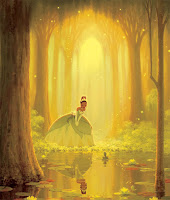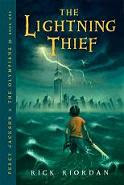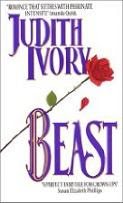Happy Tuesday, everyone! I missed you last Tuesday (thanks to Angela James, Carina Press, and Megan for filling in!), but I have been thinking about many things this week. Among them are:
Author copies! I got a box full of Countess of Scandal this week, and have been ogling them ever since. So pretty! So shiny! So purple! I’ve been working on this book for a long time, but somehow nothing seems quite “real” until I hold a copy in my hands. It releases on January 26, and I’ll be doing a launch party and giveaway here at the Riskies on January 30. Join us for a chance to win one of these very copies!
Birthdays! Mine was Friday, and there was cake (Italian cream!) and presents, including this Hello Kitty watch (in its equally fab Hello Kitty box!). It makes getting older a little more fun.
And new book covers! This one is for the US release of To Catch a Rogue, Book One of “The Muses of Mayfair” (in April!) I’m so excited to see these books coming out here, and I love that you can see the actual Grecian statue from the story in the background of the cover. I haven’t seen the covers for the other two yet, or for the “Undone” story that will be out in March to launch the series (To Bed a Libertine), but stay tuned.
 I also avidly watched the Golden Globes red carpet arrivals (though I forsook most of the ceremony in favor of Return to Cranford!), and am talking gowns on my own blog today…
I also avidly watched the Golden Globes red carpet arrivals (though I forsook most of the ceremony in favor of Return to Cranford!), and am talking gowns on my own blog today…
And now for today’s regularly scheduled post, which was actually meant for last week! I had started it, but didn’t feel up to finishing it yet, so here it is just a bit late. I’m not much of a cook, but I do love to eat (as well as watch the Food Network and Top Chef)! And I love the history of cuisine. I enjoyed Ian Kelly’s book Cooking for Kings: The Life of Antonin Careme, the First Celebrity Chef. As I read it, I couldn’t help but imagine him as the snarky judge on an 18th century Top Chef. And January 12 was the anniversary of Careme’s death, in 1833.
 The man who came to be known as “The King of Chefs, and the Chef of Kings,” one of the first internationally known “celebrity” chefs, didn’t have a promising beginning. He was born in Paris to poverty-stricken parents in 1792, at the height of the French Revolution, and grew up working as kitchen boy in cheap cafes for his room and board. In 1798, he came to be apprenticed to the famous patissier Sylvain Bailly, who had a fancy shop near the Palais-Royal. Careme became famous for his pieces montees, elaborate subtleties several feet high made entirely of sugar, marzipan, almond paste, and other sweets in the shape of temples, ruins, pyramids, all the things antiquities-mad society loved. Bailly displayed these in his shop window, and Careme gained more fame for creating delicious sweets such as gros nougats and croquantes (made of almonds and honey).
The man who came to be known as “The King of Chefs, and the Chef of Kings,” one of the first internationally known “celebrity” chefs, didn’t have a promising beginning. He was born in Paris to poverty-stricken parents in 1792, at the height of the French Revolution, and grew up working as kitchen boy in cheap cafes for his room and board. In 1798, he came to be apprenticed to the famous patissier Sylvain Bailly, who had a fancy shop near the Palais-Royal. Careme became famous for his pieces montees, elaborate subtleties several feet high made entirely of sugar, marzipan, almond paste, and other sweets in the shape of temples, ruins, pyramids, all the things antiquities-mad society loved. Bailly displayed these in his shop window, and Careme gained more fame for creating delicious sweets such as gros nougats and croquantes (made of almonds and honey).
 In the meantime he branched out, doing work for the famous politician and gourmand Charles Maurice de Talleyrand-Perigord, who recommended him to other members of the highest Paris Society, including Napoleon (he would do the wedding cake for Napoleon’s second wedding). As he found more work, he expanded his creative repertoire from pastries to main courses and especially sauces, which would transform French cuisine. In 1804, Talleyrand moved to the Chateau de Valencay and hired Careme full-time to cook there (after a test: create a whole year’s worth of menus, without repeating a dish, using seasonal produce). He succeeded admirably, and created a new way of cooking in the process, using fresh herbs and vegetables and simpler sauces with fewer ingredients and better flavors.
In the meantime he branched out, doing work for the famous politician and gourmand Charles Maurice de Talleyrand-Perigord, who recommended him to other members of the highest Paris Society, including Napoleon (he would do the wedding cake for Napoleon’s second wedding). As he found more work, he expanded his creative repertoire from pastries to main courses and especially sauces, which would transform French cuisine. In 1804, Talleyrand moved to the Chateau de Valencay and hired Careme full-time to cook there (after a test: create a whole year’s worth of menus, without repeating a dish, using seasonal produce). He succeeded admirably, and created a new way of cooking in the process, using fresh herbs and vegetables and simpler sauces with fewer ingredients and better flavors.
After the fall of Napoleon, Careme went to London and worked as chef de cuisine to the Regent. He then traveled to Russia to work briefly for Tsar Alexander I. He ended his career as chef to the wealthy banker James Mayer Rothschild, and died at age 48. He was buried in the Cimetiere de Montmartre with honors. He’s credited with numerous things, such as inventing the chef’s toque, replacing the service a la francaise (serving all dishes at once) with service a la russe (serving each dish in a course), and creating sauces that are still the basis for classic French cooking. He wrote several cook books, especially the enormous L’Art de la Cuisine Francaise (5 volumes, published between 1833-34), which included hundreds of recipes, plans for menus, table settings, a history of French cooking, and steps for organizing the kitchen.
 If you’d like to try one of his recipes, there are several in the back of the Kelly book! Here is a nice simple one (albeit modified), Fromage Bavarois Aux Noix Verts, created for the Brighton Pavilion in 1817:
If you’d like to try one of his recipes, there are several in the back of the Kelly book! Here is a nice simple one (albeit modified), Fromage Bavarois Aux Noix Verts, created for the Brighton Pavilion in 1817:
25 walnuts
1 pint double cream
8 ounces sugar
isinglass or gelatine
1 pint whipped cream
Take 25 peeled walnuts, and pound with one pint of cream and eight ounces of sugar. Leave to infuse for an hour, and then add the isinglass and set it to cool in the fridge for half an hour. When still not set, stir in a pint of thickly whipped cream. Set it immediately into a jelly mould and leave overnight.
Voila! Regency Jello.
What have you been thinking about this week? Who is your favorite celebrity chef or French meal?
Late breaking news! I just got the cover for To Bed a Libertine! I want her hair. (TBAL is the story of Erato, the real Muse of Erotic Poetry, who comes down to Regency England to inspire a hunky artist, so the gown is totally right for her!)















